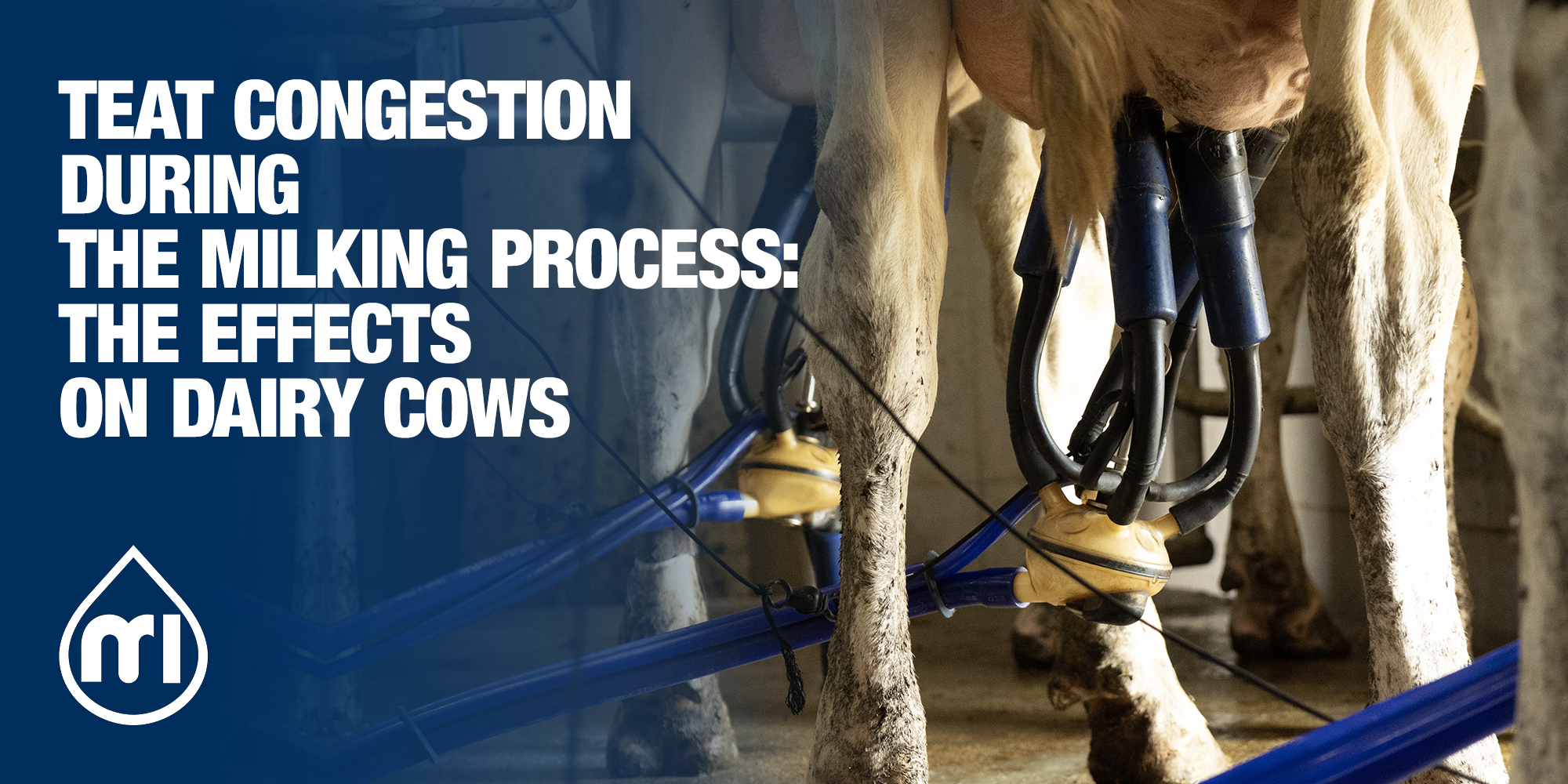
Teat congestion during the milking process: the effects on dairy cows
Teat congestion in dairy cows is a common issue encountered during the milking process.
This condition can significantly impact milk production, animal welfare, and the overall health of the herd.
Understanding the underlying causes, physiological mechanisms, and preventive measures is crucial for veterinarians and dairy farmers alike.
Physiology of the teat and milking process
The cow's teat consists of several critical structures, including the teat canal, teat cistern, and surrounding tissues.
The teat canal acts as a barrier against infections while allowing milk to pass during milking.
The milking process involves mechanical or manual stimulation of the teat, leading to the release of oxytocin from the pituitary gland, which in turn causes the alveoli to contract and expel milk into the teat cistern and through the teat canal.

Effects of teat congestion on dairy cows due to the milking process
Teat congestion, also known as teat edema, occurs when there is an abnormal accumulation of fluid within the tissue of the teat. This condition is often a result of mechanical factors associated with the milking process.
Understanding the physiological changes and potential consequences of teat congestion is crucial for ensuring the health and productivity of dairy cows.
Physiological changes
Edema formation
Fluid accumulation: excessive vacuum pressure, prolonged milking duration, or improper pulsation rates can cause increased permeability of the blood vessels within the teat tissue. This leads to the leakage of fluid into the interstitial spaces, resulting in edema.
Inflammatory response: the mechanical stress and resultant tissue damage can trigger an inflammatory response. This involves the release of inflammatory mediators, leading to further swelling and discomfort.
Tissue damage
Capillary rupture: high vacuum levels or prolonged exposure to vacuum can cause the capillaries in the teat tissue to rupture, leading to bleeding and bruising.
Cellular damage: continuous mechanical stress can damage the epithelial cells lining the teat canal and the teat skin, compromising the teat’s natural defense mechanisms.
Visible symptoms
Swelling and redness
Enlarged teat: the affected teat appears swollen and may be visibly larger than normal due to the accumulation of fluid.
Redness and heat: the teat may exhibit redness and feel warm to the touch, indicative of inflammation and increased blood flow to the affected area.
Firmness and hardness
Increased firmness: the teat may feel firmer or harder than usual due to the edema and the inflammatory response.
Difficulty in milking: the firmness can make it difficult for the milking machine to attach properly, leading to incomplete milk extraction and further congestion.
Functional impairments
Milk flow obstruction
Narrowed teat canal: edema can cause the teat canal to narrow, obstructing milk flow and leading to incomplete milking.
Increased residual milk: incomplete milking can result in increased residual milk within the udder, which can predispose the cow to mastitis (udder infection).
Pain and discomfort
Pain sensation: the swelling and inflammation can cause significant pain and discomfort for the cow, leading to reluctance to let down milk.
Behavioural changes: a cow experiencing pain may show signs of restlessness, kicking off the milking machine, or reduced feed intake.
Consequences and complications
Mastitis risk
Increased susceptibility: the damage to the teat tissue and the presence of residual milk create an environment conducive to bacterial growth, increasing the risk of mastitis.
Infection pathways: damaged epithelial cells and capillaries can serve as entry points for pathogens, leading to infection.
Milk quality and yield
Reduced milk yield: pain and discomfort can result in reduced milk let-down, leading to a decrease in overall milk yield.
Milk quality: inflammation can lead to an increase in somatic cell count (SCC) in the milk, negatively affecting milk quality and marketability.
This outlook on the possible consequences of teat congestion highlights how dangerous it could be for your farm efficiency and herd health. But there is still a lot to be told! In the next episode, we will focus on how milk flow is hindered by edema and what factors should be monitored to avoid it. Stay tuned!
